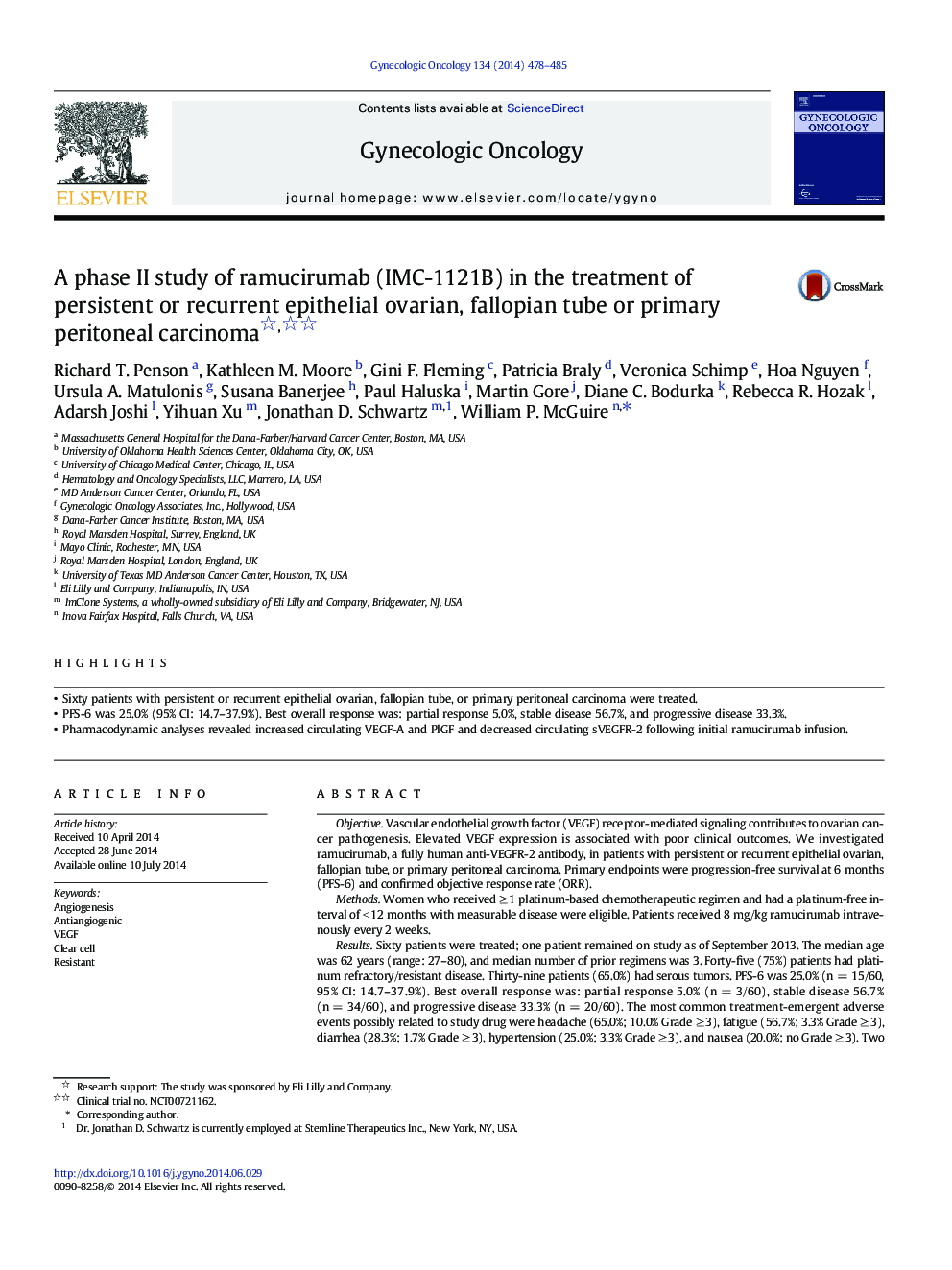| کد مقاله | کد نشریه | سال انتشار | مقاله انگلیسی | نسخه تمام متن |
|---|---|---|---|---|
| 6184392 | 1254209 | 2014 | 8 صفحه PDF | دانلود رایگان |

- Sixty patients with persistent or recurrent epithelial ovarian, fallopian tube, or primary peritoneal carcinoma were treated.
- PFS-6 was 25.0% (95% CI: 14.7-37.9%). Best overall response was: partial response 5.0%, stable disease 56.7%, and progressive disease 33.3%.
- Pharmacodynamic analyses revealed increased circulating VEGF-A and PlGF and decreased circulating sVEGFR-2 following initial ramucirumab infusion.
ObjectiveVascular endothelial growth factor (VEGF) receptor-mediated signaling contributes to ovarian cancer pathogenesis. Elevated VEGF expression is associated with poor clinical outcomes. We investigated ramucirumab, a fully human anti-VEGFR-2 antibody, in patients with persistent or recurrent epithelial ovarian, fallopian tube, or primary peritoneal carcinoma. Primary endpoints were progression-free survival at 6 months (PFS-6) and confirmed objective response rate (ORR).MethodsWomen who received â¥Â 1 platinum-based chemotherapeutic regimen and had a platinum-free interval of < 12 months with measurable disease were eligible. Patients received 8 mg/kg ramucirumab intravenously every 2 weeks.ResultsSixty patients were treated; one patient remained on study as of September 2013. The median age was 62 years (range: 27-80), and median number of prior regimens was 3. Forty-five (75%) patients had platinum refractory/resistant disease. Thirty-nine patients (65.0%) had serous tumors. PFS-6 was 25.0% (n = 15/60, 95% CI: 14.7-37.9%). Best overall response was: partial response 5.0% (n = 3/60), stable disease 56.7% (n = 34/60), and progressive disease 33.3% (n = 20/60). The most common treatment-emergent adverse events possibly related to study drug were headache (65.0%; 10.0% Grade â¥Â 3), fatigue (56.7%; 3.3% Grade â¥Â 3), diarrhea (28.3%; 1.7% Grade â¥Â 3), hypertension (25.0%; 3.3% Grade â¥Â 3), and nausea (20.0%; no Grade â¥Â 3). Two patients experienced intestinal perforations (3.3% Grade â¥Â 3). Pharmacodynamic analyses revealed changes in several circulating VEGF proteins following initial ramucirumab infusion, including increased VEGF-A, PlGF and decreased sVEGFR-2.ConclusionsAlthough antitumor activity was observed, the predetermined efficacy endpoints were not met.
Journal: Gynecologic Oncology - Volume 134, Issue 3, September 2014, Pages 478-485